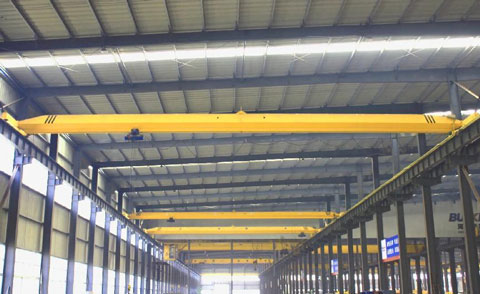Ceiling Bridge Crane and Gantry Overhead Crane Common Problems
Why does the hook of a ceiling bridge crane reach the top?
1. Limiter. The limiter of the ceiling bridge crane is the main accessory responsible for controlling the operation of the hook of the bridge crane during the lifting and lowering process. If we check the limiter during the normal work process, If you are not careful enough, the joints are likely to be adhered. Once the joints of the limiter are adhered, the limiter is equivalent to failure, causing the main hook to continue to rise during the rising process, making the wire rope unable to withstand the pressure. The collision will lead to direct breakage and damage to the hook, causing the cargo to fall and causing unnecessary safety problems. The ceiling bridge crane manufacturer reminds you to pay attention.
2. During the work of the truss crane, we do not rule out the negligence of the staff, because the hook operation of the ceiling bridge crane is pulled by the pull of the controller handle, so if the driver operates carelessly during the work, there is no pulling the handle of the controller to the zero position will cause the hook to continue to rise, causing personnel accidents.
3. Because the bridge and gantry cranes have been used for a long time, and the staff did not regularly inspect and repair them during the work, the limiters hid the hidden danger of failure, which later caused the phenomenon of overshooting.
4. Of course, this possibility is not very common, that is, the staff mistakenly switched the descending operation to the ascending operation during the work, causing the limiter to malfunction, and at the same time, the emergency driving switch was not activated in time, causing the hanging object to hit the ceiling.
5. During the installation process of the ceiling bridge crane, the installation staff forgot to modulate the corresponding sequence of the descending and ascending controllers, causing the descending and ascending limiter contacts to malfunction, eventually leading to the phenomenon of overshooting.
6.After long-term use, the screws on the limiter become loose, making the contact block unable to contact the limiter, resulting in overshooting. The above is the knowledge about hook top punching introduced to you by the mining crane manufacturer. If you have any questions about the use of ceiling bridge cranes, truss cranes and other products, please consult the crane manufacturer or bridge crane manufacturer.
Reasons for the sliding hook of electric hoist in gantry overhead crane
The electric hoist plays the role of lifting up and down and transporting heavy objects left and right on the gantry overhead crane. Once a malfunction occurs, the equipment must be stopped. For example, the common sliding hook. What are the reasons for the electric hoist sliding hook? Let's see more details below together:
1. If the electric hoist wire rope fails and the remote control presses the lifting or lowering button, if the cone brake cannot be closed normally, motor failure or insufficient power may cause the hook's load-bearing capacity to decline.
2. Bearing damage in the wire rope torque transmission will also affect the torque transmission. Bearing damage may cause various parts of the transmission mechanism to be affected by unbalanced load torque, leading to shaking, twisting of the transmission shaft, poor gear meshing, spline wear and other problems, affecting torque transmission and causing the load-bearing load of the hook to decline.
3. If the reducer fails, the electric hoist in gantry overhead crane reduces the speed and increases the torque through gear transmission at all levels in the reducer. Any distortion or breakage of any transmission shaft, broken teeth or poor meshing of any gear will affect the transmission of torque, and will also cause the load-bearing load of the hook to decline.
4. The cone brake of the electric hoist in gantry overhead crane is in a normally closed state. If the braking force is insufficient during the lifting or lowering process of the hook, the cone brake cannot be closed normally, which will also cause the load-bearing load of the hook to decline.
5. There is a problem with the torque transmission from the motor in the electric hoist of gantry overhead crane to the reducer. The motor and reducer of the electric hoist are located on both sides of the hoist, and the torque transmission is completed by the transmission shaft and coupling inside the drum. If the transmission shaft is broken, the splines are worn, the coupling is damaged and other problems occur, it will affect the transmission of torque, resulting in a decline in the hook's load-bearing capacity.
If you have any technical questions about ceiling bridge cranes and gantry overhead cranes, please contact us freely, and we will provide you professional answers of ceiling bridge crane and gantry overhead crane. Welcome to consult us!
- The last one:Common Faults and Solutions of Double Girder Bridge Cranes
- The next one:Features and Working Principle of Grab Cranes
 info@dejunindustry.com
info@dejunindustry.com +86 13721448067
+86 13721448067






